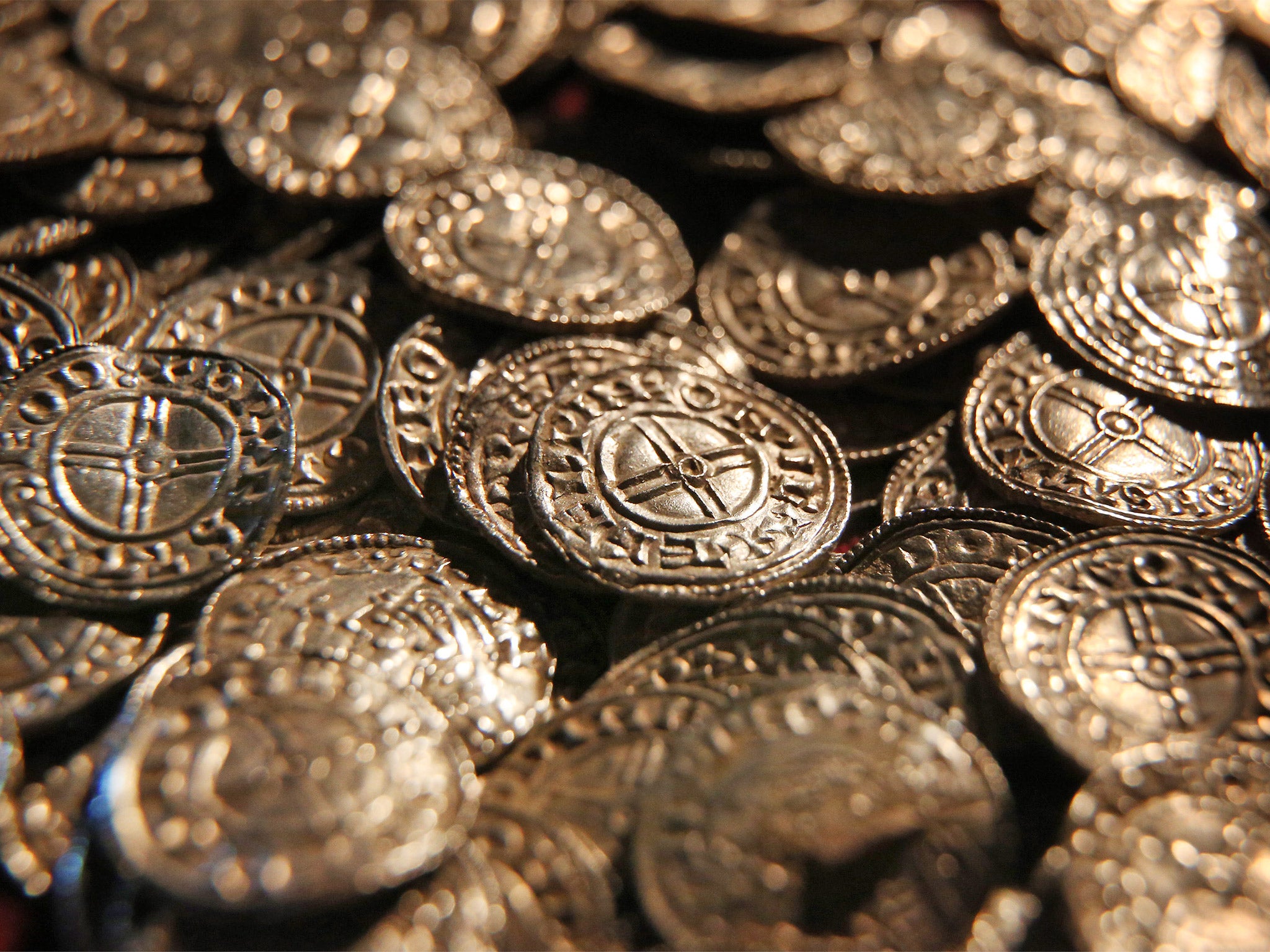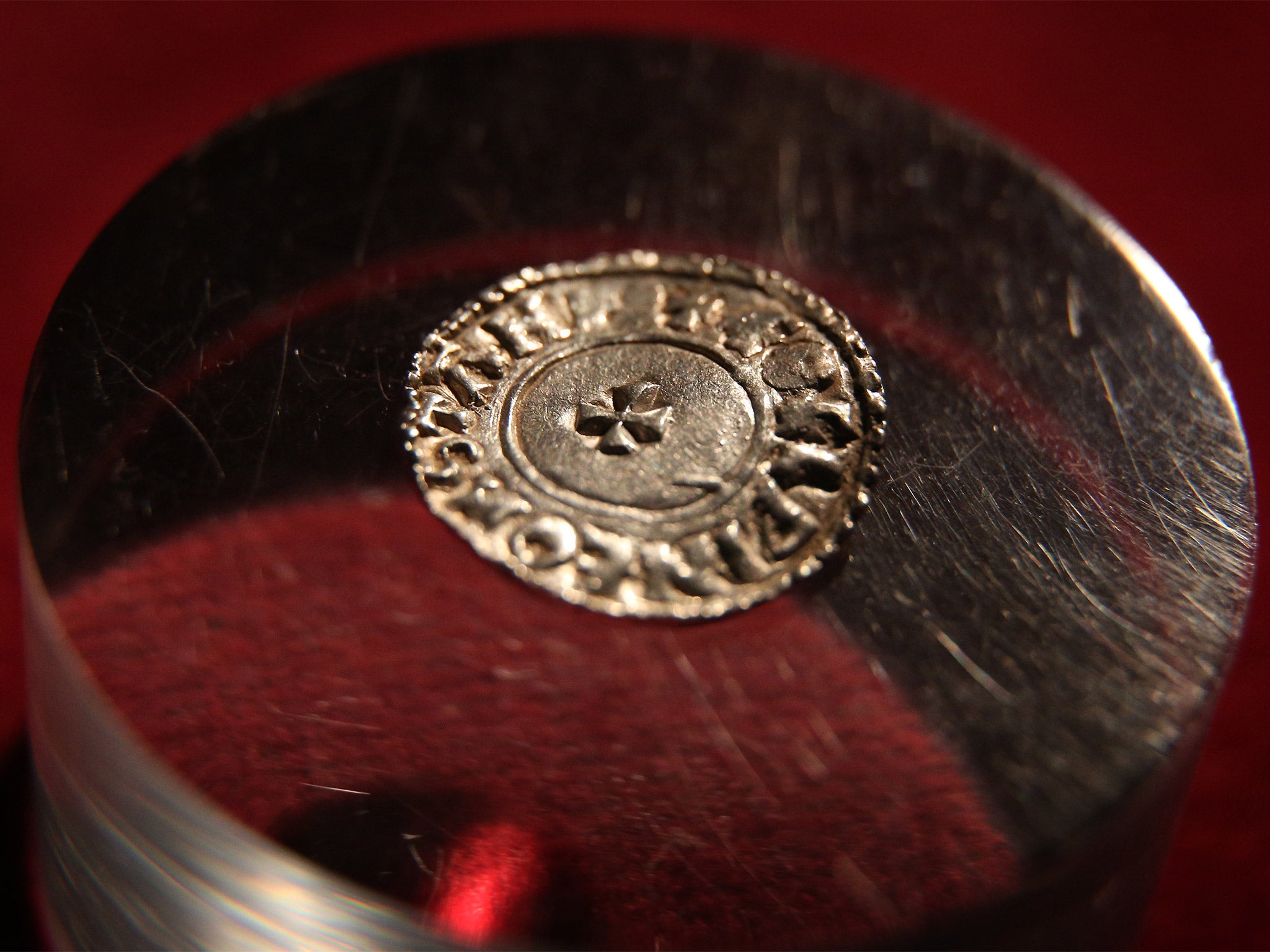Largest hoard of Anglo-Saxon coins found in recent years goes on display at British Museum
“We haven’t seen [a find] like this for a long time”

Your support helps us to tell the story
From reproductive rights to climate change to Big Tech, The Independent is on the ground when the story is developing. Whether it's investigating the financials of Elon Musk's pro-Trump PAC or producing our latest documentary, 'The A Word', which shines a light on the American women fighting for reproductive rights, we know how important it is to parse out the facts from the messaging.
At such a critical moment in US history, we need reporters on the ground. Your donation allows us to keep sending journalists to speak to both sides of the story.
The Independent is trusted by Americans across the entire political spectrum. And unlike many other quality news outlets, we choose not to lock Americans out of our reporting and analysis with paywalls. We believe quality journalism should be available to everyone, paid for by those who can afford it.
Your support makes all the difference.Rare treasures from the largest hoard of Anglo-Saxon coins discovered in recent years, found by a metal detectorist, have been put on display at the British Museum.
The archaeological hoard, of about 5,200 coins, buried during the reign of Cnut in the 11th century, was discovered in the Buckinghamshire village of Lenborough shortly before Christmas wrapped in a lead sheet.
A total of 300 coins will be on display at the British Museum while the collection goes through the “treasure process” of valuation ahead of a potential sale, possibly to a Buckinghamshire institution.
Pippa Pearce, senior conservator at the British Museum, said it was a “glammy” find: “We haven’t seen one like this for a long time.”
It is the largest collection of Anglo-Saxon coins since the Treasure Act became law in 1996 when it was unearthed at the end of December. Metal detectorist Paul Coleman compared finding the coins to “winning the pools”.

He was on a metal-detecting rally and said stumbling across the treasure was “fate".
"Something was drawing me to the find that day,” he said. “The first reaction was relief. You’ve spent all that time and now there’s something to show for it.”
Other finds included Bronze Age bracelets belonging to a child from possibly as early as 1400 BC, and a post-medieval reliquary cross from Skellow in South Yorkshire that still contained its relic, which will be sent for testing.
The Treasure Report for 2012 revealed of the 990 finds, 368 were acquired by local museums including a Roman silver bracelet found in Cumbria and acquired by the Dock Museum.
Culture minister Ed Vaizey was at the launch of the Treasure Annual Report covering 2012. Following rumours that Neil Macgregor was being courted by institutions in Germany, the minister joked he wanted to place an “export ban” on the British Museum director.
Join our commenting forum
Join thought-provoking conversations, follow other Independent readers and see their replies
Comments